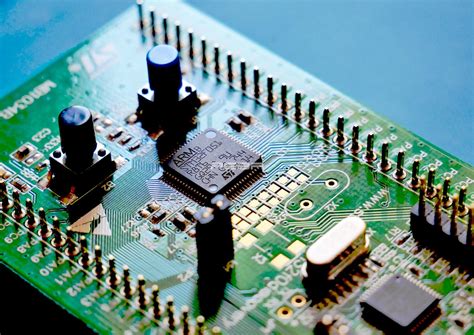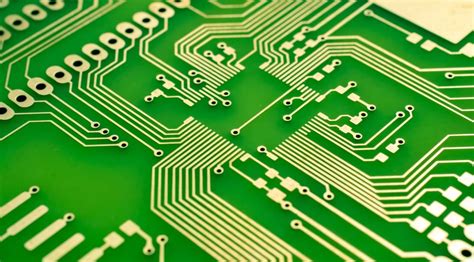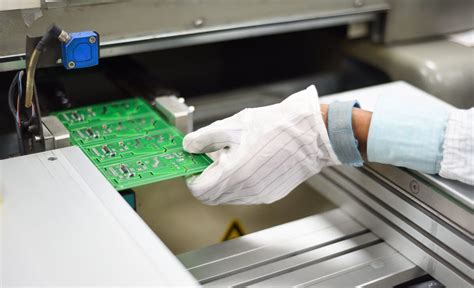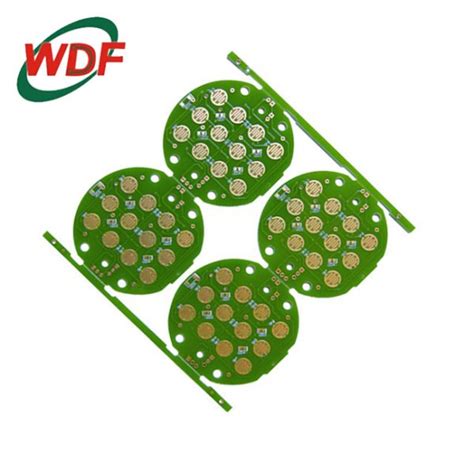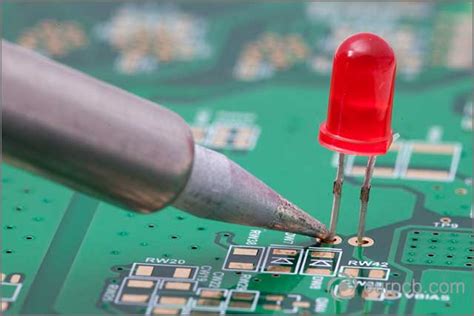Optimizing PCB SMT Assembly for Enhanced Efficiency and Quality

Key Takeaways
To truly grasp the nuances of PCB SMT assembly, one must understand its underlying principles and the significance it holds in modern electronics. PCB assembly (PCBA) plays a crucial role in the production of electronic devices, where high efficiencies and quality are paramount. By employing advanced technologies, such as automated placement systems and advanced soldering techniques, manufacturers can significantly enhance productivity.
Adopting best practices is essential for streamlining PCB assembly processes. This includes meticulous planning, optimal material selection, and the integration of proper assembly techniques. It is also vital to implement robust quality control measures to minimize defects during the production phase. A well-structured quality assurance system not only mitigates risks but also enhances overall product reliability.
One notable approach to enhancing assembly efficiency is through continuous process improvement methodologies like Lean and Six Sigma. These strategies focus on waste reduction while maximizing value creation in PCBA operations.
“Continuous improvement is about understanding our processes deeply enough to eliminate waste while optimizing quality.”
A closer look at case studies reveals several successful optimization strategies employed by leading companies in the industry, illustrating how innovative solutions can lead to improved outcomes in SMT production.
| Strategy | Benefit |
|---|---|
| Automation | Increased speed and accuracy |
| Regular training | Improved skills and knowledge retention |
| Process analytics | Data-driven decision making for efficiency |
| Vendor partnerships | Access to superior materials and technology |
As we move forward, staying abreast of future trends—such as IoT integration and AI-driven analytics—will be imperative for continual advancement in PCB SMT assembly technology. Understanding these dynamics will equip professionals with the tools necessary to navigate common challenges faced during SMT assembly operations effectively.
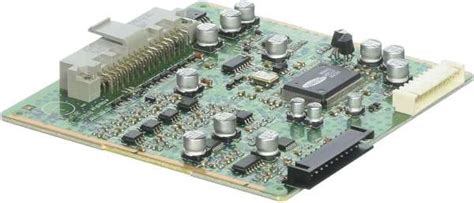
Understanding PCB SMT Assembly: Basics and Importance
PCB SMT assembly is a vital process in the manufacturing sector, specifically in the production of electronic devices. This method integrates Surface Mount Technology (SMT) using printed circuit boards (PCBs) as a foundation for assembling electronic components. The significance of understanding this assembly process cannot be overstated, as it impacts both the efficiency and quality of the final product. In PCB assembly, or PCBA, the optimizing techniques play a crucial role in ensuring that components are placed correctly and reliably on the board. By employing state-of-the-art equipment and advanced techniques, manufacturers can effectively address challenges related to component density, thermal management, and miniaturization of devices. Moreover, appreciating the importance of SMT assembly is fundamental for ensuring that products meet stringent industry standards and customer expectations. As such, a thorough understanding of this process lays the groundwork for implementing strategies that bolster productivity while reducing costs associated with production errors or defects. Ultimately, mastering PCB SMT assembly is essential for any organization seeking to thrive in today’s competitive technology landscape.
Key Technologies Driving Efficiency in SMT Assembly
In the realm of PCB assembly, several key technologies have emerged that significantly enhance efficiency and quality. One of the most impactful advancements is the implementation of automated assembly machines, which streamline the placement of components on printed circuit boards. These machines utilize sophisticated algorithms and vision systems to ensure precise alignment, thereby reducing errors and increasing throughput. Additionally, the integration of Artificial Intelligence (AI) in monitoring production processes enables real-time adjustments based on data analytics, resulting in fewer defects and improved overall performance in pcba.
Another notable technology is the adoption of surface mount technology (SMT), which allows for more compact designs by placing components directly onto the surface of the PCB. This not only saves space but also enhances electrical performance by minimizing signal paths. Furthermore, advancements in soldering techniques, such as laser soldering and jet soldering, have improved joint reliability and reduced cycle times.
The use of advanced software solutions for design verification and simulation further drives efficiency by allowing engineers to identify potential issues early in the production cycle. These technologies collectively contribute to a more streamlined process, enabling manufacturers to meet increasing demands while maintaining stringent quality standards within pcb assembly operations. As these technologies continue to evolve, they pave the way for superior assembly outcomes in the dynamic landscape of electronics manufacturing.
Best Practices for Streamlining PCB Assembly Processes
To enhance the efficiency of PCB assembly, it is crucial to adopt several best practices that streamline operations while ensuring high-quality outcomes. First and foremost, optimizing the layout of the printed circuit boards (PCBs) remains foundational. A well-designed pcba layout reduces material waste and minimizes assembly time. Additionally, employing advanced SMT (Surface Mount Technology) techniques can significantly improve placement accuracy and speed. Regular training for assembly line workers is also vital; skilled personnel are better equipped to handle complex processes and troubleshoot issues promptly.
Integration of automated systems is another strategy worth considering; implementing automated optical inspection (AOI) allows for real-time monitoring of assembly quality, thereby reducing rework rates. It’s essential to establish a feedback loop between design and assembly teams to address any potential issues early in the design phase, minimizing problems during production. Furthermore, maintaining a clean and organized work environment can greatly enhance productivity by reducing errors related to misplaced components.
Ultimately, by focusing on these practices—effective design management, employee training, automation, and quality feedback mechanisms—manufacturers can achieve a more streamlined pcb assembly operation that not only enhances overall efficiency but also elevates the quality of the final product in an increasingly competitive market.

Implementing Quality Control Measures in SMT Production
Ensuring high quality in PCB assembly processes is paramount for achieving optimal results and maintaining customer satisfaction. Implementing effective quality control (QC) measures in SMT production involves several key strategies. First, integrating thorough inspection protocols at various stages of the assembly process can help identify defects early, reducing the likelihood of costly rework or recalls. Techniques such as Automated Optical Inspection (AOI) and X-ray inspection are instrumental in detecting issues that might compromise the integrity of the PCBA. Furthermore, fostering a culture of continuous improvement within the production team encourages proactive identification of potential problems. Regular training sessions for staff on best practices and new technologies can contribute significantly to overall product quality. Utilizing data analytics tools also enables manufacturers to monitor production metrics closely, facilitating timely interventions if deviations from established standards occur. In this context, leveraging Statistical Process Control (SPC) techniques is essential for maintaining consistency. Ultimately, a robust QC framework not only enhances product reliability but also boosts efficiency by minimizing errors and streamlining operations in SMT assembly processes.

Case Studies: Successful Optimization Strategies in PCB Assembly
In recent years, numerous companies have implemented innovative strategies in their PCB assembly processes, leading to significant improvements in both efficiency and quality. One notable case is that of a leading electronics manufacturer that adopted advanced automation technologies, which streamlined the SMT assembly process. By integrating robotic pick-and-place machines and sophisticated vision systems, they successfully reduced production time while maintaining high standards of accuracy. This shift not only enhanced throughput but also minimized human error, ensuring consistent quality across their PCBA output.
Another compelling example comes from a company that focused on optimizing their supply chain management as part of their pcb assembly strategy. By establishing closer relationships with suppliers and implementing just-in-time inventory practices, they were able to reduce lead times and material costs. This approach allowed them to respond quickly to market demands and minimized waste during manufacturing, thereby improving the overall efficiency of their SMT assembly lines.
In addition to these technological and operational advancements, training programs aimed at upskilling employees have proven invaluable. One organization implemented a comprehensive training curriculum on best practices for surface mount technology, resulting in enhanced worker proficiency and engagement. As a consequence, they observed not only improved assembly outcomes but also higher employee satisfaction.
These case studies illustrate that successful optimization strategies in PCB assembly can take various forms — from embracing technological innovation and enhancing supply chain logistics to investing in workforce development. By adopting such holistic approaches, companies can achieve superior assembly outcomes that meet the increasing demands of the electronics market while ensuring product integrity and reliability across all stages of production.

Future Trends in PCB SMT Assembly Technology
As the demand for more advanced electronics continues to rise, the future trends in PCB SMT assembly technology are becoming increasingly vital for maintaining competitiveness in the market. One significant trend is the integration of automation and robotics, which has been shown to enhance both efficiency and accuracy in the PCB assembly process. Innovations such as robotic arms equipped with vision systems can drastically reduce human error, leading to higher quality output and faster turnaround times. Moreover, advancements in machine learning are facilitating smarter production lines where systems can self-optimize based on real-time data, thereby improving overall performance.
In addition to automation, there is a growing emphasis on sustainability within the industry. Manufacturers are exploring eco-friendly materials and processes that minimize waste while maintaining rigorous quality standards. This not only caters to environmentally conscious consumers but also adheres to stricter regulations that are emerging globally.
Furthermore, the increasing complexity of electronic devices necessitates a more sophisticated approach to pcba design and assembly. Techniques such as 3D printing of PCB prototypes are gaining traction, allowing for rapid iterations and design adjustments before full-scale production begins.
As we look ahead, it’s clear that embracing these advancements will be imperative for companies aiming to enhance their PCB SMT assembly processes. By focusing on automation, sustainability, and innovative design methodologies, businesses can not only streamline their operations but also position themselves favorably in an ever-evolving technological landscape.
Common Challenges and Solutions in SMT Assembly Operations
In the realm of pcb assembly, various challenges can arise that may hinder production efficiency and compromise quality. One significant issue is the high rate of defects during the SMT (Surface Mount Technology) process, which can stem from several factors, including improper placement, inadequate soldering techniques, and component misalignment. To tackle these defects effectively, adopting advanced automated inspection systems such as Automated Optical Inspection (AOI) is critical. These systems can identify flaws in real-time, allowing for immediate corrective actions that enhance overall production quality.
Another common challenge is managing component supply chains. Delays or shortages can disrupt pcba (Printed Circuit Board Assembly) projects, leading to schedule overruns and increased costs. Implementing a robust inventory management system can alleviate this problem by providing accurate data on stocks and ensuring timely reorders of critical components.
Lastly, workforce training and skill development are essential for maintaining a high-performing SMT assembly operation. Frequent updates in technology require operators to stay informed about the latest techniques and tools. Regular training sessions focused on using newer equipment and methodologies not only boost morale but also enhance the overall efficiency and reliability of the pcb assembly process.
By addressing these common challenges through technological innovations and proactive management practices, organizations can significantly improve their SMT assembly operations, ultimately leading to superior outcomes in quality and efficiency.
Conclusion
In summary, optimizing PCB SMT assembly processes is essential for achieving enhanced efficiency and higher quality in PCBA productions. By understanding the latest advancements in technology and incorporating best practices, manufacturers can address common challenges effectively. The integration of real-time monitoring systems and automated inspection tools significantly contributes to minimizing defects and streamlining operations. Additionally, fostering a culture of continuous improvement encourages teams to innovate and adapt to evolving industry standards. As the landscape of PCB assembly continues to advance, embracing these optimization strategies will not only improve productivity but also ensure that quality remains paramount, leading to greater customer satisfaction and business success. Ultimately, focusing on these key elements will result in a sustainable competitive edge in the rapidly changing world of electronic manufacturing.
FAQs
What is PCB SMT assembly?
PCB SMT assembly (Surface Mount Technology assembly) refers to the process of mounting electronic components directly onto the surface of a printed circuit board (PCB). This method is favored due to its speed and efficiency in creating compact, high-performance devices.
Why is optimizing PCB assembly important?
Optimizing PCB assembly, or PCBA, is vital for enhancing production efficiency and ensuring high-quality outcomes. Improvements in this area can lead to reduced manufacturing costs, improved product reliability, and shorter lead times.
What are some common challenges in SMT assembly?
Common challenges include component misalignment, soldering defects, and inadequate cleaning processes. Addressing these issues through optimized practices can significantly elevate the overall performance of the SMT assembly process.
How can technology improve SMT processes?
Adopting advanced technologies such as automated optical inspection (AOI), pick-and-place systems, and real-time data analytics can streamline PCB assembly operations, leading to higher precision and reduced errors.
What role does quality control play in PCB SMT assembly?
Quality control measures are essential in identifying defects early in the process. Implementing stringent quality checks ensures that every PCBA meets established standards, thereby enhancing the final product’s reliability and performance.

